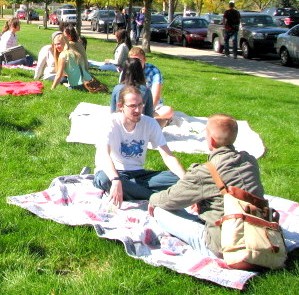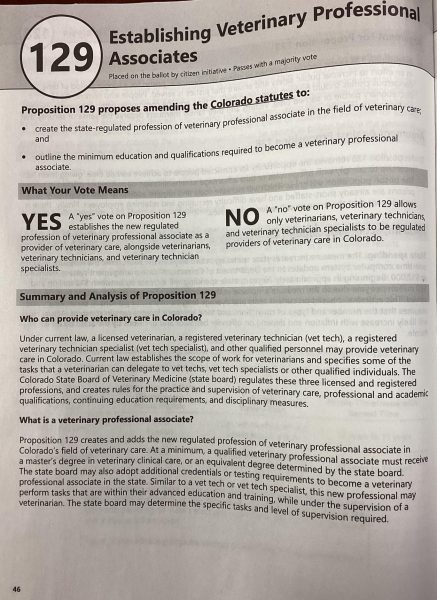Personal report: The eyes have it — if we let them

Image via Picasa
Eye contact is not always easy, even on the lawn of ACC.
Every day, we see hundreds of faces on our way to work, in the hallways at school, on public transportation and in the checkout line at the store.
But do we really see them? Do we notice and acknowledge them through conversation or simple eye contact?
With the rise in technology, there seems to be a shift in in-person contact and the readiness for strangers to interact.
Those thoughts and questions helped set the stage for Teresa Huels’ Interpersonal Communications class, which conducted a human connection experiment on the front lawn of the Littleton Campus on Oct. 15.
The class sat on blankets and beach towels, leaving an open space across from each person for a stranger to come and share eye contact.
As I approached the group, I noticed very few passers-by stopped to directly acknowledge what was going on. Most stood distinctly far away, watched over phone screens, feigning preoccupation.
The point of this experiment was to create a friendly platform for shared human connection through 60 seconds of eye contact with a stranger.
“The verbal aspect [of interpersonal communications] is small,” Huels said. Body language accounts for most connections.
Very little outsider participation materialized in the experiment. The expectation was to have multiple people sitting down with strangers and sharing a moment, exposing vulnerability and making a connection. Yet very few agreed to let their guard down and expose themselves in 60 seconds of silent eye contact. For a moment, I was one of them.
When I finally sat down in front of Zach Zimberoff, my stomach knotted, and I felt the need to make small talk and look away. Holding eye contact felt so direct and incredibly intimidating. The first few seconds were filled with nervous shifting and fiddling with the hem of my sweater before I was able to breathe and really look at him.
“Was that a minute?” he asked after only 38 seconds. Our quiet eye contact was broken and we both exhaled an uncomfortable laugh.
Even in this friendly and inviting environment, it was difficult to maintain a connection.
I tried again with Karla Casillas. During the experiment I found each of us taking quick glances away every few seconds and holding back the urge to talk instead.
Asked about her experience, she said she had only had four connections within the last two hours, one being me.
“It feels weird to stare,” she said. “Eye contact with a stranger opens the door for communication.”
However, after the initial awkwardness, it was nice to have the window to start a conversation with each of these strangers. The minute with each of them connected us in the smallest way, and it allowed me to embrace the vulnerability I felt and to see someone that I might not have otherwise. It left me wondering how many connections I have missed by looking away or avoiding strangers on the light rail or in the school’s hallways.
In the age of smartphones and tablets, it’s easy to distance ourselves from others. But when you allow yourself to see and be seen by a stranger, powerful things can happen.
Look them in the eye. Don’t avert your eyes in fear of feeling awkward. See someone. You may just make a connection.







